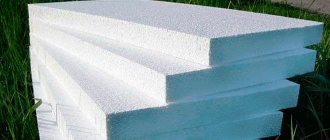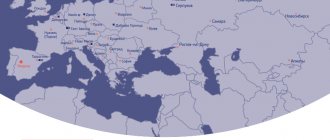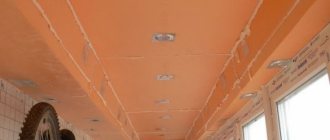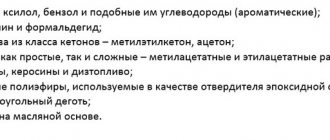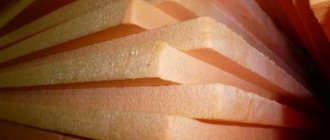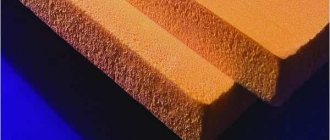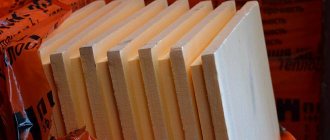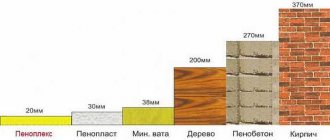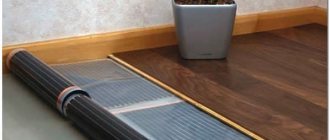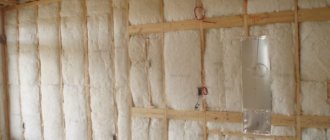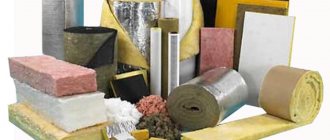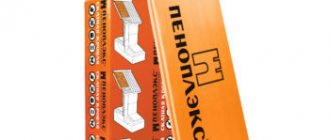Venerable rival
Insulation materials are essentially extruded polystyrene foam. This is a new generation of thermal insulators that can effectively retain heat. Today in the assortment of large stores you can find a number of such building materials that are used for similar purposes, but still differ in their characteristics. Let's look at and compare the most popular of them.
Penoplex competitors
Penoplex is one of the most popular foam materials , the properties of which have been improved as a result of additional processing - extrusion. Use of penoplex: attics, facades, roofs and foundations of buildings. For each of these objects there is a separate, most suitable type of slab.
Wide use of the product is possible due to a number of properties:
- Minimally absorbs water, which is important for heat insulators. A series of experiments were carried out, during which the product was left in water for several days - moisture penetrates only into the outer layers, and the internal closed cells remain dry.
- It has a low thermal conductivity coefficient (0.03 W*m*°C), and the value does not change significantly even in a humid environment. This expands the scope of application and allows the product to be used in conditions of increased dampness.
- Low vapor permeability – protects the surface well from moisture evaporation. Due to this property, a 2-centimeter layer of material can replace a layer of roofing felt.
- Long service life. During the experiments, it was established that the properties of the product do not change even after a significant change in external conditions - it was frozen and thawed, and also tested with water. The manufacturer indicated that the plates last about 50 years, but tests indicate a longer period of use.
- Compression resistance. Thanks to the production technology, the board has a homogeneous structure with evenly distributed small cells, which improves strength and resistance to mechanical stress.
- Easy installation. The material can be cut even with an ordinary knife. Self-installation is possible without the involvement of specialists.
- High level of environmental friendliness. The manufacturer used a type of freon that does not burn, is not poisonous and does not harm the environment.
- Minimal chemical activity. Does not react with most chemicals often used in construction: ketones (acetone, methyl ethyl ketone), formaldehyde, kerosene, gasoline, oil paints, etc.
- High biostability - the boards are not subject to rotting and decomposition.
Advantages and disadvantages of URSA insulation (“Ursa”)
Thermal insulator URSA (“Ursa”) is being developed in Germany. Its basis is glass fiber. However, the specific composition and features of this material vary depending on its specific variety.
The company's product range includes five lines of thermal insulators:
Geo
. This series is characterized by high environmental friendliness and is therefore suitable for insulating houses made from environmentally friendly materials. However, this feature has made Ursa Geo a popular solution for the construction of private and apartment buildings, office and retail buildings;
Pure On
. Another solution that is well suited for use in private construction. It is made of mineral wool and, thanks to its special texture, practically does not irritate the skin, eyes and mucous membranes;
Terra
. Special coating, which is made in the form of technical mats. Focused on use in the construction of industrial facilities, insulation of sloping roofs and facades. It has excellent sound insulation properties;
Seko
. Rolled thermal insulation, which is used on sloping roofs, external walls and ceilings;
XPS
. Unlike other materials, XPS is not made from mineral wool, but from extruded polystyrene. Thanks to this, it is universal and suitable for thermal insulation of almost all parts of the building.
All this makes the materials suitable for insulating shallow foundations, floors, brick, stone, sheathing and frame walls, as well as roofs. The material itself is distinguished by excellent thermal insulation properties, elasticity, lightness and low price.
Characteristics of the technoplex
The slabs are made using similar technology and have been produced in Russia since 2006. They do not shrink, are resistant to chemical influences, but are resistant to gasoline and solvents, and are also used inside buildings. Let's compare several parameters:
| Penoplex | Technoplex | |
| Use of buildings | roofs, facades, roads | inner part |
| Density, kg/m3 | 25-47 | 26-35 |
| Flammability group | G4 | G4 |
| Water absorption,% | 0,2-0,4 | 0.2 |
| Vapor permeability | 0,012 | 0.01 |
| Price, rub/m2 | 90-250 | 100-290 |
Advantages and disadvantages of Penoplex insulation
“Penoplex”, unlike its predecessor, is made from extruded polystyrene. Therefore, it also has excellent thermal insulation qualities and is characterized by lightness and ease of installation. However, the use of extruded polystyrene somewhat changes the scope of use of this heat insulator.
There are currently four lines of this coating on the market:
“Wall” (“31” with fire retardant). Used to insulate walls (both external and internal) and the base;
“Foundation” (“35”). Installed on the base and foundation of the building;
“Roof” (“35”). Installed on roofs - flat, sloping and even inverted;
“Comfort” (“31C”). A universal solution that is suitable for insulating any part of the building.
Fire retardant is a special substance that prevents the fire of the heat insulator. Therefore, wall versions of Penoplex are supplemented with it, which increases fire safety, but has a negative impact on the price.
Styrofoam or penoplex
A line of materials used for insulating three-layer walls, flat and pitched roofs, plinths, and underground parts of a building. Also used in the manufacture of sandwich panels, on highways and airfields.
Strength – 250-500 mPa;
Flammability group – G3 or G4;
Water absorption – 0.2%;
Vapor permeability – 0.006 mg/(mh*Pa).
URSA insulation - technical characteristics of various types + Video
Thermal insulation materials called URSA are quite popular. They not only carry out traditional insulation of roofs and walls, but also insulate ventilation pipes and other communications. And with their help you can significantly reduce the noise level. So, meet URSA (URSA) - insulation, the technical characteristics of which are kept at a fairly high level, and the service life is very long. Thanks to its excellent heat retention and excellent noise absorption, it will be good in any building structure.
What are URSA insulation materials and their varieties?
This thermal insulator is based on treated staple fiberglass. So this material is the closest relative of glass wool. When making it, sand, soda, dolomite and other additives are taken in certain proportions. The mixture is heated to the melting point and passed through a special apparatus. The result is a fibrous substance, the thin threads of which are glued with a special composition.
There are several products manufactured by URSA. The most common are the URSA GEO series insulation, made of fiberglass. In addition, the company produces polystyrene foam heat insulator URSA XPS, made by extrusion. A new product from the manufacturer, manufactured using the latest technologies, is PureOne insulation. Let's take a closer look at all these materials.
1. URSA GEO fiberglass mineral insulation is distinguished by the fact that only environmentally friendly components are used in its production. This is strictly controlled at all stages of the production process. So you can be sure that neither the raw materials nor the finished material contain harmful additives. All materials in this group are fiberglass, but each is endowed with some unique properties and is intended for use in certain conditions and insulation of various objects.
The appearance of URSA GEO insulation is no different from glass wool.
2. Thermal insulator type URSA XPS also has its advantages and is an extruded polystyrene foam produced using a special technology. Its thermal conductivity coefficient is very low, especially compared to other thermal insulators. Plates made from this material last for many years, they are very hard and durable. Therefore, it is advisable to use them when insulating flat roofs, floors on the ground floor, facades under plaster, basements and plinths. URSA XPS will fully withstand multi-ton loads - it is used to insulate railway embankments, airport landing strips and highway bases.
3. As for the newest PureOne material, this mineral heat insulator of excellent quality is ideal for both insulating structures and protecting them from extraneous noise. According to all technical indicators, it produces excellent results. In addition, it is comfortable to work with, since it is not prickly, does not attract dust and is similar to natural materials - cotton or wool. This material is a new type of fiberglass products that does not cause an irritating effect.
This is what PureOne, a new type of fiberglass insulator, looks like.
4. There is another fairly new product from URSA. This is TERRA mineral insulation, positioned by the manufacturer as a material of increased rigidity and moisture resistance and is intended for thermal insulation of private houses. But in terms of its performance, it is close to professional heat insulators. This insulation is very elastic, does not get wet and does not burn.
Characteristics of various types of URSA insulation
URSA GEO fiberglass insulation
The heat conservation ability of this insulator is quite good. After all, its fibers are elastic and long, so many layers of air form between them. By insulating a house with this material, you can expect that its walls will not freeze in winter. Thermal conductivity coefficient λ determines how good a given insulation is. The lower the value of this parameter, the better the material saves heat. For URSA GEO it ranges from 0.035 to 0.044 watts per meter per Kelvin, depending on the type of insulation.
In terms of noise dampening, this insulation is also excellent. It can have a sound absorption class of either “A” or “B”. Both laboratory studies and practical results have proven this. In principle, all fiberglass materials are capable of blocking sound waves well. Therefore, if there is a need to make a soundproofing partition in an apartment, then as an option, you can consider one of these materials.
Regarding environmental friendliness. Even at the stage of preparing raw materials, all components are thoroughly checked. The finished URSA GEO insulation is also tested for safety for humans and nature. Let us take as an example the emission of volatile compounds in this material. And it is 10 or 15 times less than Russian and European standard indicators. So, with this insulation, your home will have clean air and a favorable microclimate. It must be remembered that all fiberglass materials generate a little dust and therefore the walls of the internal parts of the room must be covered with waterproofing membranes.
Fire does not damage the mineral heat insulator URSA GEO - after all, it is made on the basis of quartz sand. This natural material cannot catch fire. And if he encounters an open fire, he will not let it pass further into the room.
This insulation is not in danger of aging. Even after a long time, it remains the same as it was at the very beginning. Neither its strength nor other properties change. And manufacturers guarantee a service life of no less than 50 years.
Biological resistance. Since this substance is inorganic, rats, mice and insects do not like it. Harmful microorganisms, such as mold, for example, do not grow in it. After all, all these living creatures simply have nothing to eat. So they do not live in URSA GEO, bypassing it.
We draw your attention to the fact that all materials in this group are fiberglass with all the ensuing advantages and disadvantages, which you can read about in our special material: Technical characteristics of mineral wool, its brand and selection criteria, be sure to read it.
The above characteristics are inherent in all URSA GEO type insulation, and more details about them can be found in the table below:
Insulation type URSA GEOThermal conductivity at 10 0C, W/mKCoef. vapor permeability, mg/mchPaFeatures and application
| M-11 | 0,040 | 0,64 | The most popular material, universal type |
| Mini | 0,041 | Universal material in mini rolls | |
| A private house | 0,041 | Recommended for use in the construction of private houses | |
| Universal plates | 0,036 | 0,51 | Material in slabs, intended for wall insulation |
| Light | 0,044 | 0,64 | For use in horizontal unloaded structures |
| Pitched roof | 0,035 | Rolled slabs for pitched roofs | |
| Noise protection | 0,040 | Sound insulation material, ideal for gypsum structures, sound absorption class B. | |
| Frame | 0,035 | For use in frame structures | |
| M-11F | 0,040 | 0 | Roll material foiled on one side |
| M-15 | 0,037 | 0,51 | For floors, pitched roofs, with arbitrary spacing of structures |
| M-25 | 0,034 | For insulating pipelines with temperatures up to 270 0C | |
| M-25F | 0 | Material with a layer of foil for insulating pipelines. | |
| Facade | 0,032 | 0,51 | The material is covered with fiberglass and is intended for insulation of external facades and ventilation gaps. |
| P-15 | 0,037 | 0,62 | Material in slabs for frame walls and partitions |
| P-20 | 0,034 | 0,61 | Boards for thermal insulation on the outside or in the middle layer of the wall |
| P-30 | 0,032 | 0,59 | For use in the construction of three-layer walls of curtain ventilated facades |
| P-35, P-40 | 0,58 | Plates of increased vibration resistance for insulation of railway cars | |
| P-60 | 0,030 | 0,52 | Semi-rigid slabs for use in floating floor construction |
Video: Physical and mechanical properties of URSA thermal insulation
Innovative insulation URSA PureOne
1. The new technology, which was the first to be used by Russia and Europe, is successfully spreading throughout the world. It is with its help that this material is made. The essence of the technology is that acrylic, a chemically neutral and safe polymer for humans, is used as one of the binding components. Therefore, fiberglass is not as prickly as with standard production technology and produces less dust. Acrylic is a fairly inert material; it is not dissolved by water and does not oxidize the air. Therefore, insulation of this type can be used in kindergartens and hospitals.
2. As for the noise-absorbing characteristics of URSA PureOne insulation, they are confirmed by tests of scientists from the NIISF (Building Physics) of the Russian Academy of Sciences. According to research data, material in the form of slabs has sound absorption class “A”, material in the form of mats has class “B”. The elastic acrylic included in the composition is able to perfectly absorb sound waves. Therefore, partitions made of this material protect against noise better than those made of stone wool or glass fibers. The difference can be 2 decibels.
3. This insulation is also more elastic than ordinary fiberglass. They even talk about a certain “spring effect” that occurs inside it. Therefore, it is tightly fixed in the wall cavities, rigidly installed in the spacer, and its shape does not change over time.
The above are the properties that distinguish it favorably from GEO type insulation; for more detailed characteristics of PureOne brands, see the article:
Insulation type URSA PureOne Thermal conductivity at 10 0C, W/mKCoef. vapor permeability, mg/mchPaFeatures and application
| 34 RN | 0,034 | 0,51 | Can be used in insulating children's, school and preschool institutions; it is produced in the form of slabs. |
| 37 RN | 0,037 | Roll material for insulating floors and walls from the inside, can be used in children's and preschool institutions. | |
| 37 RN | 0,035 |
Video: How to easily install URSA PureOne insulation in slabs
Expanded polystyrene insulation URSA XPS
1. Durability. This material has excellent strength and increased resistance to deformation. Moreover, it withstands not only stretching and compression with honor, but also perfectly resists bending. URSA XPS can withstand 50 tons of load applied to one square meter.
2. Environmental friendliness. In the manufacture of this heat insulator, carbon dioxide CO2 is used, which is not a toxic substance at all. All breathing living organisms (including you and me) secrete it. Therefore, neither the production process of this type of insulation nor the finished product are harmful to humans and nature. But we must not forget that this is polystyrene foam, which releases toxic substances when exposed to high temperatures. This issue is discussed in detail in our article: Expanded polystyrene - characteristics and selection criteria, be sure to read it.
3. Water permeability. Thermal insulation material URSA XPS does not absorb water. Therefore, its ability to retain heat is not reduced when exposed to groundwater or wet soil. Freezing and thawing again (more than 500 times), it remains the same. Therefore, where the ambient temperature often changes, it is quite advisable to use this insulation. This compares favorably with the fiberglass heat insulators discussed above.
4. Service life. Slabs made from this brand of insulation can last for at least 50 years. In this case, neither the shape, nor the dimensions of the slabs, nor the characteristics of URSA XPS will change at all. This material is not dangerous from direct contact with plants or soil - this is a definite plus.
5. Flammability. Fire retardants - substances that improve fire resistance - are included in URSA XPS N-III-L. They block the path to oxygen, and thanks to this, combustion does not occur. But as mentioned above, this material is polystyrene foam, which, if it does not support combustion, melts very easily under the influence of temperatures, releasing toxic substances.
For more detailed technical characteristics of this insulation, see the table:
Insulation type URSA XPSThermal conductivity at 10 0C, W/mKCoef. vapor permeability, mg/mchPaWater absorption for 24 hours, %Features and application
| N-III-L,N-III-L-G4,NV | 0,032 | 0,004 | 0,3 | Rigid polystyrene foam boards with L-shaped edge. |
| N-III-I | Rigid polystyrene foam boards with straight edge. |
Video: Thermal insulation of flat roofs using URSA XPS
You might be interested
srbu.ru
